
New Photos
July 7, 2007
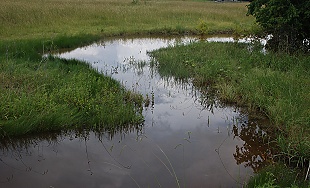 |
 |
| On July 3, we managed to get out between rains...this is the area above the #3 gabion, looking south toward our neighbor's house (which I cropped out, as I don't know if they'd want it shown.) In normal high water, there are two pools separated by a rock check-dam...you can't even see the rocks here, roughly in the middle of the S-curve. Dragonflies were zipping up and down the water, challenging each other for territory. | The north horse lot in a very wet year....much greener than it usuallly is in July. At the lower end, it's got standing water. |
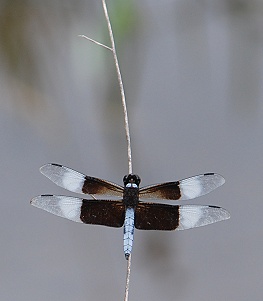 |
|
| On July 3, as we were walking along the secondary drainage above the #3 gabion, this male Widow Skimmer flew out from a stick overhanging one of the pools and then landed again, several times. | |
 |
|
| Indian paintbrush is a spring flower. This is midsummer. But with enough water, the spring flowers are doing their best to hang on and make more seed. | |
 |
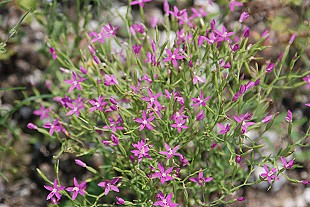 |
| Coming up through Cactus Flats, the most obvious color is the gold of corepsis and greenthread, but mixed in much lower are purply-blue skullcap, blue vervain, cream-colored sida, and rosy "mountain pink" gentians. | I'm not sure if we have one or two species of Centaury...we have one that has flowers this size and color, but is "straggly", not forming neat clumps, and this year the clump-forming one (locally called "mountain pink" showed up near Fox Pavilion. It is the same rosy pink as "meadow pink", which grows in seepy areas. These prefer very well-drained ground and will grow right ouf of caliche/gravel. |
 |
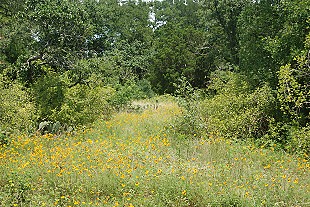 |
| Ironweed is a native prairie mid-summer-to-fall bloomer...it grows up tall, to compete with prairie grasses; its purple flowers attract butterflies after other flowers have died off from heat and drought. This year we don't have the heat and drought, but the ironweed is flowering on schedule anyway. | Just west of Fox Pavilion, looking north...usually by July this is browning off, not covered with wildflowers. Under the yellow coreopsis are smaller yellow, cream, pink, and blue flowers. |
 |
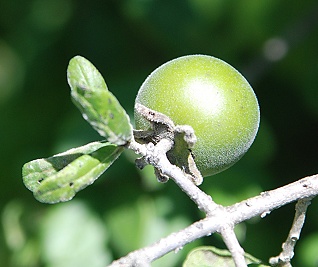 |
| Our milkweed doesn't grow as tall--even in a wet year--as milkweed up north. But the snowy, silken filaments that airlift the seeds are just as beautiful. | Texas persimmon is a small scrubby tree that has very small fruits much loved by wildlife. They turn black and sandpapery on the outside, with sweet brown mushy insides. Unlike eastern persimmons, they don't pucker your mouth and require a freeze to be edible. |
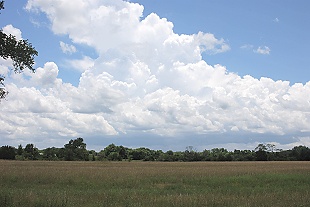 |
|
| July 7th, yet another day when the rains were supposed to be gone...we had no rain until, in the afternoon, this storm popped up to the south, grew in all dimensions, and dumped some rain on us. I took this shot on the way back from Fox Pavilion; I had gauged the height of the rapidly growing cloud I could see from the hammock, and headed back just in time to hear it thunder at me as I came across the grass. | |
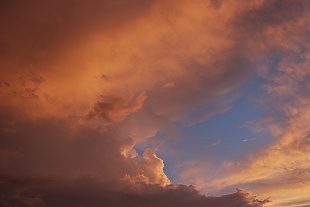 |
|
| Another line of storms showed up in the evening, rumbling away to the south, southeast, and west. We could see lightning occasionally in this one, as dusk came on, but I never did get the picture of lightning inside and sunset colors outside. | |
![]()

